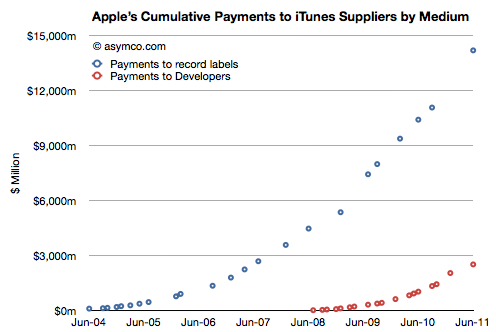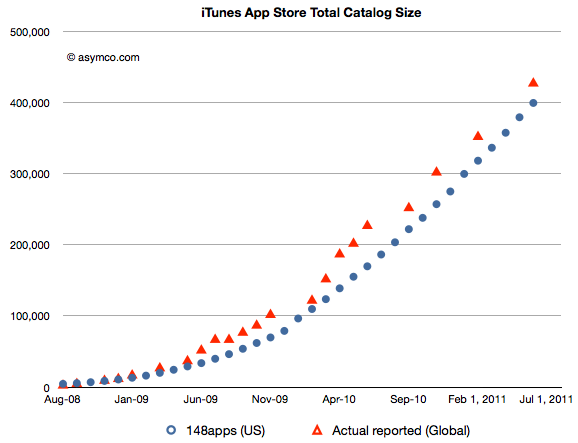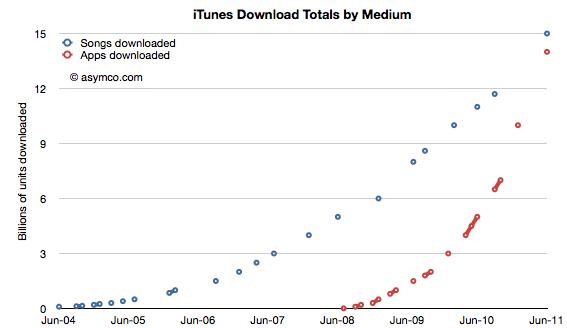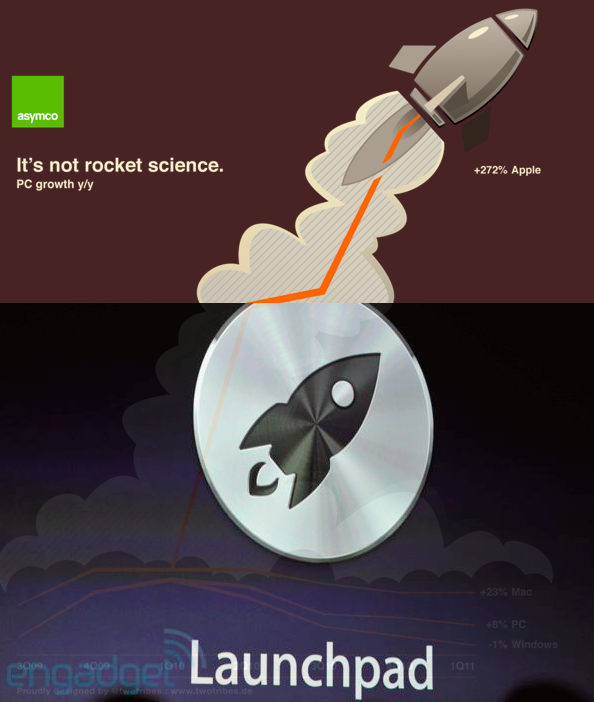The second quarter ends in less than two weeks. When it does, I expect Apple will have over $70 billion in Cash, Cash Equivalents, Short-term marketable securities and long-term Marketable Securities. That figure has been growing predictably.
Also predictable has been the decline in value of Apple’s mobile phone competitors. Most spectacularly Nokia and RIM. The enterprise values of the public companies selling 75% of all phones sold world-wide are as follows:
- Nokia $22.6b
- RIM $13.8b
- HTC $25.4b
- Motorola Mobility $4.2b
The values of the profitable phone-making subsidiaries are a bit more difficult to estimate but we can use multiples of trailing operating profits. I generously use the multiple applied to HTC (14).
- Sony Ericsson $0.21b x 14 = $3.0b
- Samsung $3.76b x 14 = $53b
That leaves valuing LG’s phone business which has not been profitable in the last four quarters. I assume a nominal value of $10b. These data points are shown in the following chart: Continue reading “Apple could buy the mobile phone industry”




